SUMMARY
This is AI generated summarization, which may have errors. For context, always refer to the full article.
![[ANALYSIS] Rethink PUV modernization, focus on commuters](https://www.rappler.com/tachyon/2023/12/PUV-CONSOLIDATION-DID-NOT-REDUCE-GHG-EMISSIONS.jpg)
PUV consolidation did not reduce GHG emissions
The requirement of consolidating individual public utility vehicle (PUV) operators into a corporation or a cooperative has been a sticking point in the PUV Modernization Program (PUVMP). In the current deadlock between traditional jeepney (PUJ) operators and the Department of Transportation (DOTr)/ Land Transportation Franchising and Regulatory Board (LTFRB), commuters bear the brunt of a reduction in the public transport supply due to transport strikes or resigned PUJ operators who drop out of the industry. These are unbearable to commuters who suffer daily from a severely deficient public transport system.
So why is consolidation a “necessity,” according to DOTr Secretary Jaime Bautista?
Consolidation will give juridical entities like cooperatives and corporations access to capital needed to purchase modern vehicles at an estimated cost of P2.1 million. Banks will lend money to cooperatives and corporations, but not to individual operators. The Land Bank of the Philippines (LBP) and the Development Bank of the Philippines (DBP) have set up loan facilities for the PUVMP, and received P2.2 billion from the national budget to be used for “the required subsidy of the PUV owners when applying for loans in order to replace old public utility jeepneys with more efficient PUVs.” According to reports, utilization is dismally low.
It would appear then that consolidation is pushed so that these budgets can be utilized and subsequently, old PUVs are replaced.
Modern units, the government argues, will reduce carbon emissions of the public transport system. Studies say that the jeepney industry has contributed more than 15% of road transportation greenhouse gas emissions in the country. From 2017-2022, DOTr reports that the PUVMP has successfully replaced old PUVs with 6,000 modern units.
Meanwhile, there had been a steady increase of private motor vehicle use. When PUVMP began In 2017, there were 1 million private cars plying our roads. In 2022, the Land Transportation Office estimated a total of 1.27 million private cars, or an average annual increase of 54,000 newly registered cars. Not to mention the increase in motorcycle registrations in the past five years also.
The PUVM Program suspended franchise applications from 2017, which meant a stagnation (and even a decrease) in public transport supply for the past five years. This also meant that the increase in travel demands due to population growth was not met by the public transport sector, and have pushed Filipinos to use of private motor vehicles. The reduction in GHG emissions attributed to the 6,000 modern PUVs is clearly outdone by the GHG emissions from the newly introduced 270,000 private cars from 2017-2022. While unintended, PUVMP has increased GHG emissions, as it suspended the increase of public transport supply for the past five years.
PUV consolidation did not improve commuting experience
DOTr reports that there are currently 60% consolidated entities nationwide. These consolidated entities are expected to completely replace their traditional PUVs into modern units. The remaining 40% are directed to consolidate on or before the non-extendable deadline of December 31. While LTFRB top officials gave public assurances that a phaseout will not happen, in the same breath they warn that operators can no longer register their units with the Land Transportation Office (LTO) the following year.
Starting 2024, one can almost surmise that DOTr and LTFRB will welcome new industry players, with sufficient capital and a fresh supply of modern PUVs, to slowly ease out non-consolidated groups. But is the industry enticing enough? Corruption scandals at different levels of LTFRB regulations and procedures do not exactly offer a warm welcome.
It is likely then that existing industry players are to seize and control the routes and operations of the remaining 40%. How will that improve the commuting experience?
Beyond the comforts offered by modern vehicles, commuters want adequate supply and reliability (or regularity) of public transport service. This is not explicitly included in the PUVM Progam design and is assumed to follow, with consolidation. The program assumes that with consolidation, cooperatives or corporations will be incentivized to provide more efficient and coordinated services to the commuting public, to increase ridership and revenues. I have not observed this to be the case in my commutes in routes where there had been consolidation and modern jeeps plying.
In an industry where fare increases are strictly regulated, PUVs operate on a “alas-puno” (full-o’clock) basis so that operators can earn a profit. With the additional loan to pay off, the pressure to earn a profit among operators-now-turned-cooperative is higher under the same logic of operations, but with modern vehicles. Increasing and improving service is not the priority, survival is.
The only time commuters experienced regularity of service was under the point-to-point (P2P) bus service, and under the DOTr Service Contracting Program introduced by the Bayanihan to Heal As One Act of 2021. Under the Service Contracting program, PUVs plied a route according to schedule, regardless of whether the units were full or not. Government paid driver-operators on a kilometer-basis. Public transport service was partially or fully subsidized. PUV operators – consolidated or not – were coordinated and organized in their service through the said arrangement. This demonstrated that coordinated, organized, and regular service is possible under an arrangement, other than what is assumed to follow after consolidation in the PUVM Program. The Service Contracting Program effectively consolidated operations of individual operators through a performance-based agreement or a service plan.
Consolidation of operators into single entities is obviously different from consolidation of operations through coordinated, organized, and regular services. The former is what DOTr/ LTFRB insists through the PUVM program. The latter is what commuters need.
Bring in the LGUs: Consolidation that will address commuter woes
Consolidation of operations through coordinated, organized, and regular service is what commuters need. That much is clear. Commuters will patronize public transport service that is reliable and predictable. When public transport ridership increases, revenues also increase. This allows and incentivizes industry players to invest more in and improve public transport service, like modern vehicles.
A potential interested stakeholder in organizing public transport operations is the local government unit (LGU). Many local governments operate public transport terminals, which would directly benefit from an increase in public transport service. Local governments also operate public markets and other local enterprises that would benefit from higher foot traffic brought by an increase in public transport activities, not to mention the increased vibrancy in local economic activities. Local governments have the natural interest to be involved in public transport operations, even implement service contracts just like what Quezon City has so competently demonstrated.
In the PUVM Program design, however, LGUs are involved only insofar as the development of the Local Public Transport Route Plans (LPRTP). Their coordinative and organizing capacities are overlooked, maybe even ignored by DOTr and LTFRB.
In terms of attracting investors, consolidation of operations at the level of the LGU (city or province) provides the scale needed to manage and organize public transport service that is efficient and can guarantee investment returns. The PUVM Program is pushing for consolidation at the minimal scale of routes – this does not ensure efficient interconnectivity. Also, potential investors would likely prefer partnerships with LGUs that have the leverage and can provide representation before DOTr/ LTFRB. Cooperatives/ corporations that operate routes, on the other hand, have limited bargaining power with DOTr/ LTFRB.
But who is mainly responsible/ accountable for the deficient public transport system, commuters ask. It would appear that based on the DOTr and LTFRB’s mandates and responsibilities, adequacy of public transport service is not a concern. It is not in the agencies’ performance metrics. DOTr can issue policies and create programs to incentivize the private sector to provide adequate service. LTFRB can regulate fares, routes, and PUV units in a manner that will ensure adequate supply. None has happened. Top officials of DOTr and LTFRB are presidential appointees, who are unbothered by public protests. In the face of a public transport crisis, commuters’ cries have to reach the President for his men to even begin getting concerned.
Alternatively, if and when LGUs become the consolidator of operations, someone will finally be accountable for adequate service. Public transport services will form part of the basic services that LGUs provide their constituents. Following their natural interest, LGUs will provide adequate public transport service beyond what is mandated in the Local Government Code. Constituents turn into clients who will and can demand improvement of service. Constituents will make public transport service an election issue that will make or break a mayor/ governor’s political career. And like clients, constituents can decide to leave a locality if the public transport service does not support their growth. Accountability lines are direct, unlike with appointees who serve at the pleasure of the President.
Consolidation under the PUVM Program was mainly about access to capital to introduce modern PUVs. Consolidation of operations through the LGUs is about aligning interests towards ensuring adequacy of public transport service for commuters. In the current design of the PUVM Program and its consolidation requirement, public transport service has gone down. It will go down further in 2024. Things could get worse for commuters, for the environment, and the economy.
It is unfortunate that the current administration inherits and bears the burden of continuing what the Duterte government failed to complete in five years. It does not have to.
Meanwhile, the President’s top men in DOTr and LTFRB have to look beyond themselves for the help that they need. The woman-mayor of Quezon City has shown what’s possible. – Rappler.com
Toix Cerna is a policy and institutions specialist. She is a member of various mobility advocacy groups, such as Komyut (Spokesperson), Move Metro Manila, and Move As One Coalition. She has been closely following the PUV Modernization Program since its beginnings in 2017.
She finished Master of Arts in Development Studies from the University of East Anglia, Norwich, United Kingdom under a Chevening Scholarship, and Bachelor of Arts in Political Science from the University of the Philippines, Diliman.
Add a comment
How does this make you feel?
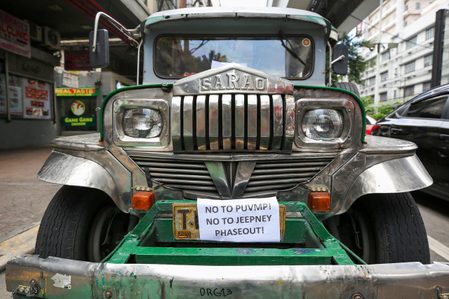
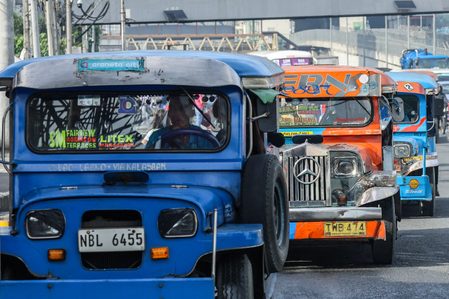


![[Under 3 Minutes] When will we see modern jeepneys on the road?](https://www.rappler.com/tachyon/2024/04/francisco-motors-modern-jeepney-prototype-1.jpg?resize=257%2C257&crop=590px%2C0px%2C1012px%2C1012px)









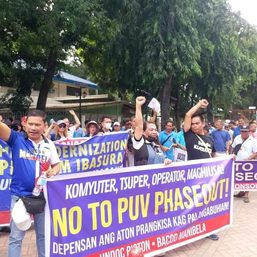
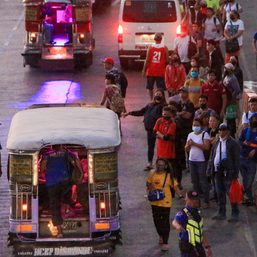
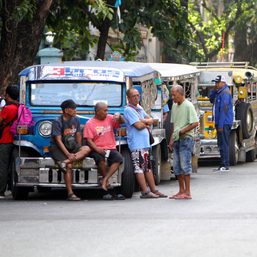
There are no comments yet. Add your comment to start the conversation.